World SSBN. Part 2
FRANCE
The limited and densely populated territory of France practically excluded the possibility of covert construction and deployment of protected mines of ground-based ballistic missiles. Therefore, the French government decided to develop the maritime component of the Strategic Nuclear Deterrence Force.
France, after withdrawing from NATO, unlike Britain, was practically deprived of American assistance in this area. The design and construction of the French SSBNs, and especially the creation of a reactor for them, went with great difficulty.
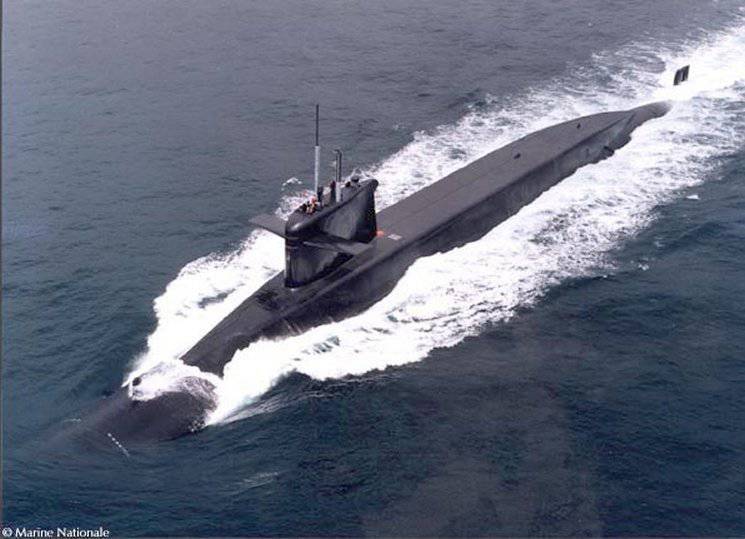
The lead SSBN Redutable was laid in 1964. It was under construction for about eight years. Of these, five years at the shipyard, in construction afloat, one and a half years, and the same amount was required to test the equipment before putting it into service fleet. In 1967, she was even returned to the shipyard in order to correct the identified design flaws on the slipway. The construction time for subsequent boats of this class was reduced to five to six years. In addition to the main French Navy received five more SSBNs of this type.
Reduttable transferred to the fleet in 1971 (in January, 1972 entered combat patrols for the first time) and the following Terribl were equipped with sixteen MXXUMX SLBMs with a maximum range of 1 km., With a monoblock 3000 MT warhead. Unlike the British who received weapon for their missile carriers in the USA, the French managed to build missiles for their boats themselves. Beginning with the 1987, during the next overhaul, all boats, except for the Redutable retired in 1991, were upgraded to accommodate the missile system with the M4 SLBM, with a range of 5000 km and 6 150 Kt. The last boat of this type was withdrawn from the French Navy in the 2008 year.
The head in a series of SSBs "Redoubt" after the decommissioning and cutting of the reactor compartment was turned into a museum.
Redubel-type SSBNs have been replaced by four next-generation Triumfans.
The collapse of the USSR largely influenced the development program of French NSNF. The number of planned SSBNs has been reduced from six to four. In addition, due to delays in the development of the M5 system, it was decided to equip the built boats with rockets of the “intermediate type” M45. The M45 rocket was a deep upgrade of the M4 rocket. As a result of modernization, the firing range was increased to 5300 km. In addition, the head part was installed with 6-th individual-directed warheads.
The last fourth boat of this type is Le Terrible (S 619) armed with sixteen M51.1 SLBMs with a range of 9000 km. In terms of its weight and size characteristics and combat capabilities, the M5 is comparable to the missile of the American Trident D5 system.
At present, it has been decided to re-equip the M51.2 type missiles, with a new, more powerful head, the first three boats. Work must be carried out during the overhaul. The first boat, re-equipped with a new missile, should be Le Vigilant (S 618) - the third boat of the series, which should be to overhaul in 2015 year.
As in the UK, the main forces of nuclear deterrence are deployed on SSBNs, therefore the intensity of combat service is very high. Patrols are usually conducted in the Norwegian or Barents Seas, or in the North Atlantic. Since 1983, as a rule, three boats conducted combat patrols at the same time, one was in Il-Long, and two more at various stages of major repairs in the shipyards of Brest or Cherbourg.
The average duration of the hike was about 60 days. Each of the boats made three patrols a year. Presumably, each of the boats completed patrols around 60 over the entire service life. To maintain such a high intensity of operation of the ships, two crews were created for each boat, “blue” and “red”, which alternately replaced each other.
China
China much later, compared to other UN Security Council member states, entered the race to create its own SSBNs.
The first Chinese SSRB "Xia" pr.092, created on the basis of submarines of the type "Han", was laid in 1978 year at the shipyard of the city of Huludao. The launch of the submarine on water 30 took place on April 1981 of the year, but due to technical difficulties that arose, it was possible to put it into operation only in 1987. The SSNS of the 092 “Xia” project was armed with 12 mines for storing and launching two-stage solid propellant ballistic missiles JL-1, with a launch range of more than 1700 km. The missiles are equipped with monoblock warheads with power: 200 — 300 Ct. Later it was rebuilt to test the new JL-2 missiles (8000 km range, before the 4 MIRV IN, tested from 2001), is currently in service, as an experimental and training boat.
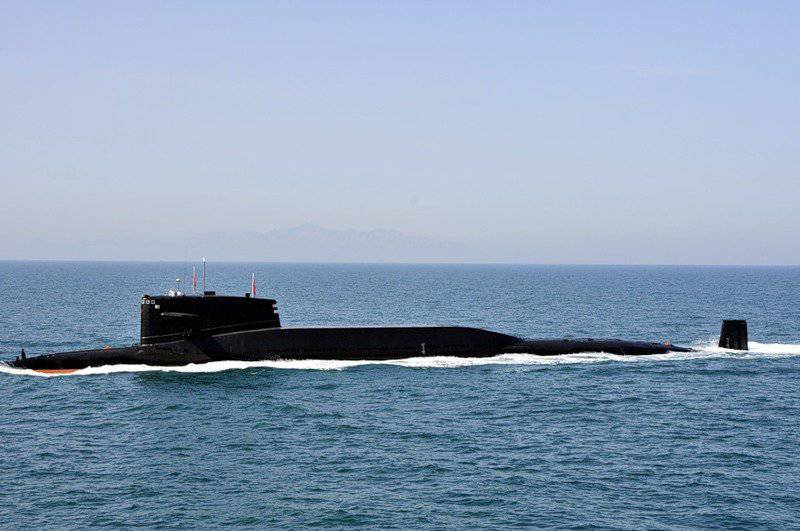
Apparently, the boat "Xia" pr.092 was not too successful, and was built in a single copy. She did not conduct a single combat service as a SSBN, and the entire period of operation did not leave the internal Chinese waters. Thus, the "SS" SSBN can be regarded as a weapon that is in trial operation and cannot fully participate in nuclear deterrence due to its weak tactical and technical characteristics. Nevertheless, it played an important role in the development of the Chinese naval nuclear forces, being a “school” for training and a “floating stand” for developing technologies.
The next step was the Jin class 094 SSBN developed in China to replace the outdated and relatively unreliable Xia strategic 092 submarine. Outwardly, it resembles the Soviet missile-carriers of the project 667BDRM "Dolphin".
094 type submarines carry 12 Xuulan-2-type ballistic missiles (JL-2) with a range of 8 thousand km.
The first submarine was formally commissioned in the 2004 year. It is assumed that there are at least three more Jin class SSBNs. According to the Chinese media, in March 2010, the 6-I was launched, in a row, a submarine of this type. According to some reports, the commissioning of all the Jin 094 SSBNs is delayed due to the unavailability of the armament complex.
Currently, the PRC is developing the SSBN of 096 Pr. Teng. She must be armed with an 24 SLBM with a range of at least 11000 km.
Given China's economic growth, it can be assumed that by 2020, the country's Navy will have at least 6 SSBNs 094 and 096, with an 80 SLBM of intercontinental range (250-300 AU). Which roughly corresponds to the current indicators of Russia.
In the PRC, there are three main facilities for the maintenance and deployment of SSBNs.
This is Qingdao, Sanya, near the port city of Dalian and Yulin (Hainan Island, South China Sea).
The first Chinese base designed specifically for the stationing and maintenance of the nuclear submarine was the complex built northeast of Qingdao.
The naval base Sanya equipped capital shelters for submarines, which allows them to survive even in the event of a nuclear attack.
INDIA
Currently, India has embarked on creating its own NSNF. This fact can be considered accomplished after information was received on the launch of the first Indian SSRB Arihant (“Fighter of enemies”) in Visakhapatnam in July 2009 of the year. It is planned to build four boats of this type. The design of the Indian nuclear-powered ship in many respects repeats the Soviet nuclear submarine Ave 670. A boat of this type was leased to India at the end of the 80s.
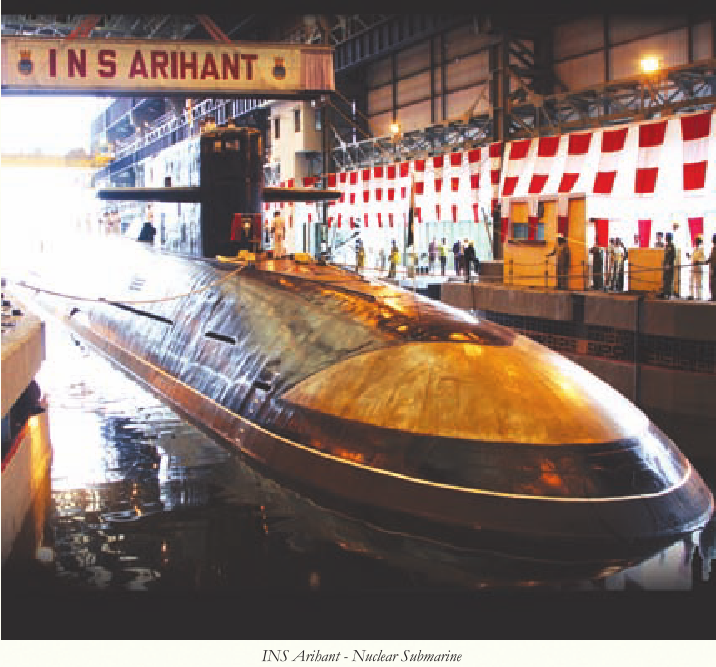
Currently, Arikhant is undergoing tests, the lead ship is scheduled to be commissioned in 2013 year. All ships are built in the shipbuilding center "Visakapatnam" on the shores of the Bay of Bengal. In the same place, the parking for new boats is not ready yet, the temporary basing of the Indian nuclear-powered ship is carried out. To do this, not far from the shipyard, light shelters were built in tight to the pier, hiding the boat from prying eyes, including from space reconnaissance facilities.
Satellite image of Google Earth: shipyard “Vishakapatnam”, near the piers built shelters for nuclear submarines
The main armament of Indian submarines are X-NUMX ballistic missiles K-12 Sagarika, having a range of 15 km and belonging to the class of medium-range missiles. In the future it is planned to re-equip Indian SSBNs with more long-range ballistic missiles.
According to the plan of the Indian leadership, new submarines equipped with ballistic missiles with a nuclear warhead should be one of the factors deterring a potential enemy. After adopting the Arikhant SSBN, India will achieve its long-established goal of possessing a triad of land-based, airborne and submarine-based nuclear weapons.
In addition to creating a missile submarine fleet, the Indians are building the SSBN base. The new base will have special means to ensure the safety of nuclear submarines and technical personnel serving the boat.
The base will be located at a distance of about 200 km from Visakhapatnam (its exact location is classified) and its type will resemble the base of Chinese nuclear submarines on Hainan Island. Capital shelters, housing and other objects will be built on the base.
By creating its own fleet of submarine rocket carriers, India, it moves into the category of countries whose opinion cannot be ignored, since this country has the potential to launch a nuclear strike anywhere in the world. Possession of strategic nuclear forces is indispensable for India, first of all in order to confront its strategic adversaries: China and Pakistan.
Despite the fact that over the past 20 years, the number of SSBNs in the world has greatly decreased (due to the collapse of the USSR), their role in nuclear deterrence has only increased. Moreover, added new countries possessing these weapons.
Sources:
http://flot.com/publications/books/shelf/vedernikov/ussr-usa/4.htm?print=Y
http://russianforces.org/blog/
http://geimint.blogspot.ru/2007/12/ssbn-home-ports-in-imagery.html
http://russian-ships.info/today/
All satellite images courtesy of Google Earth.
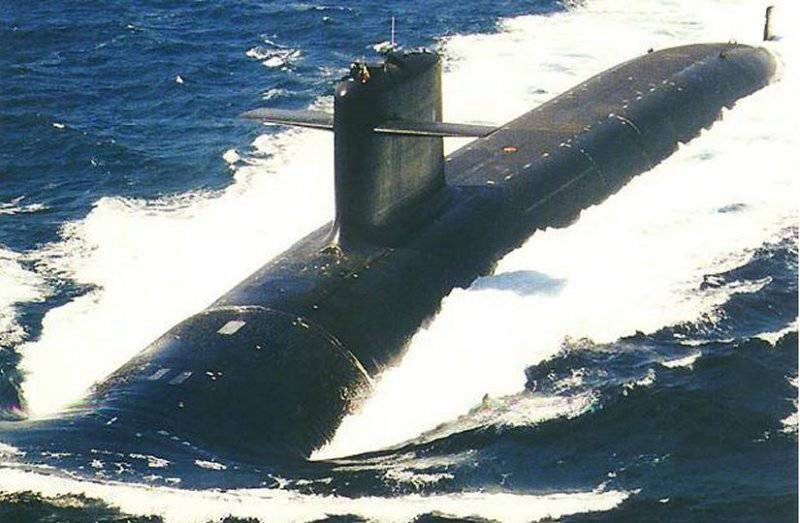
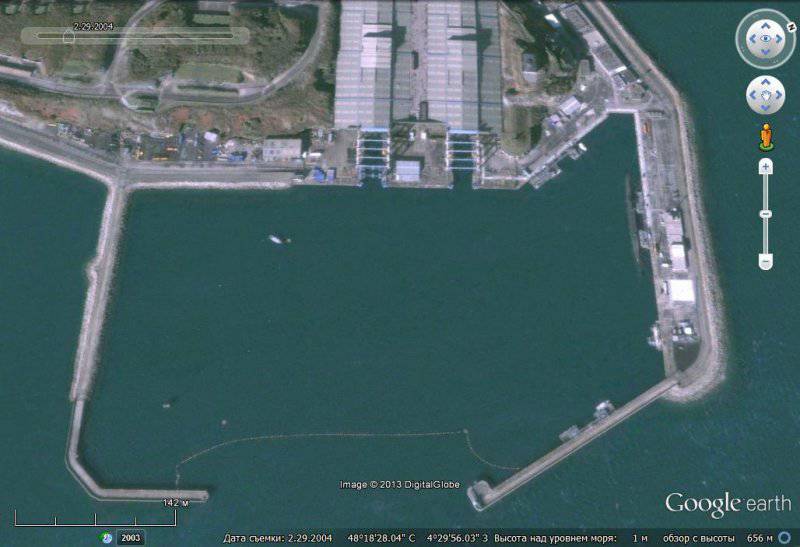
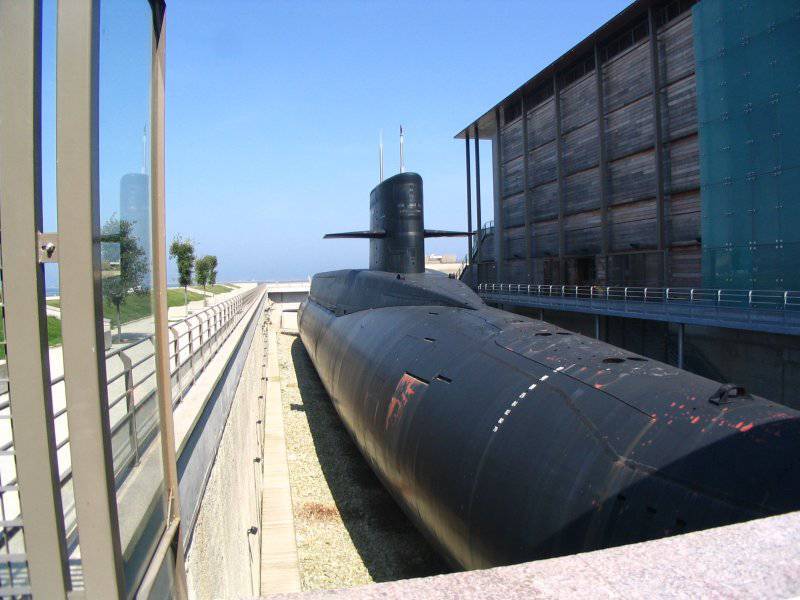
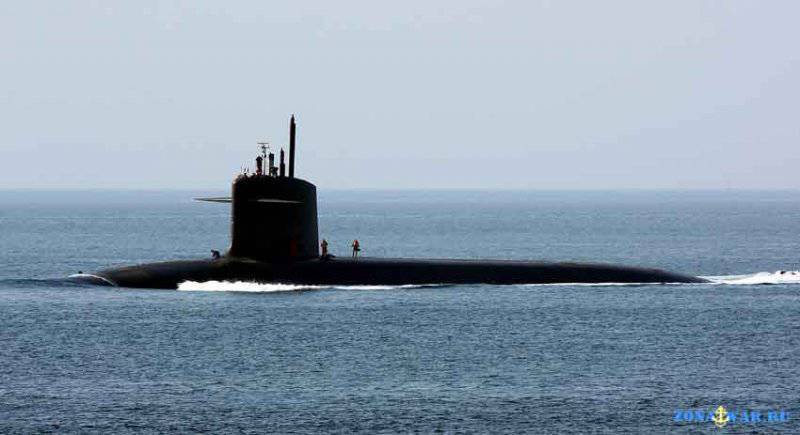
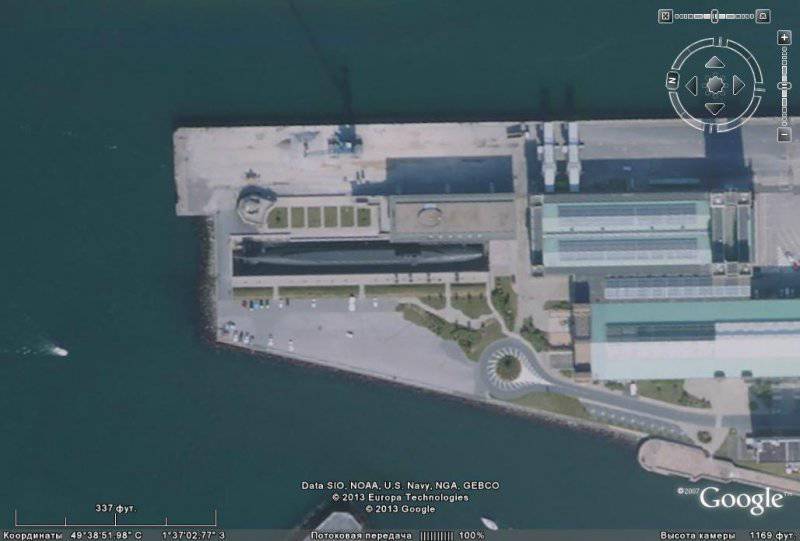
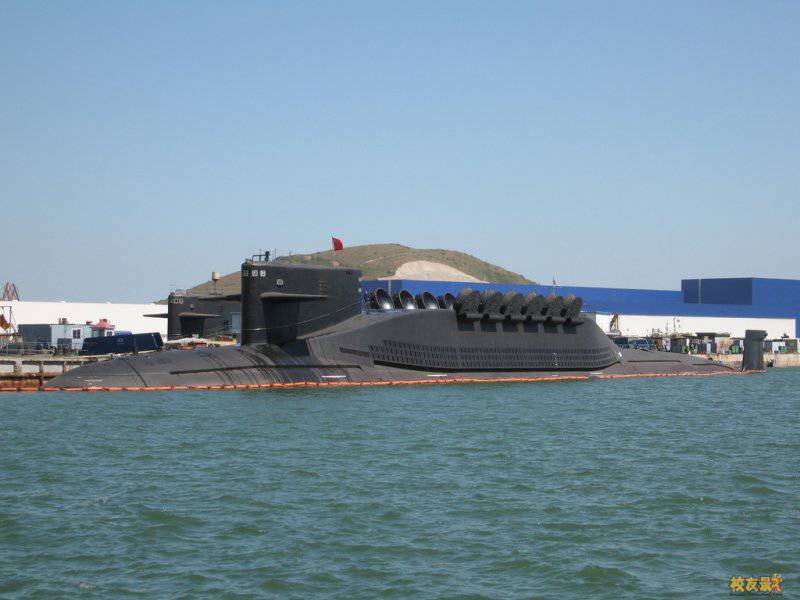
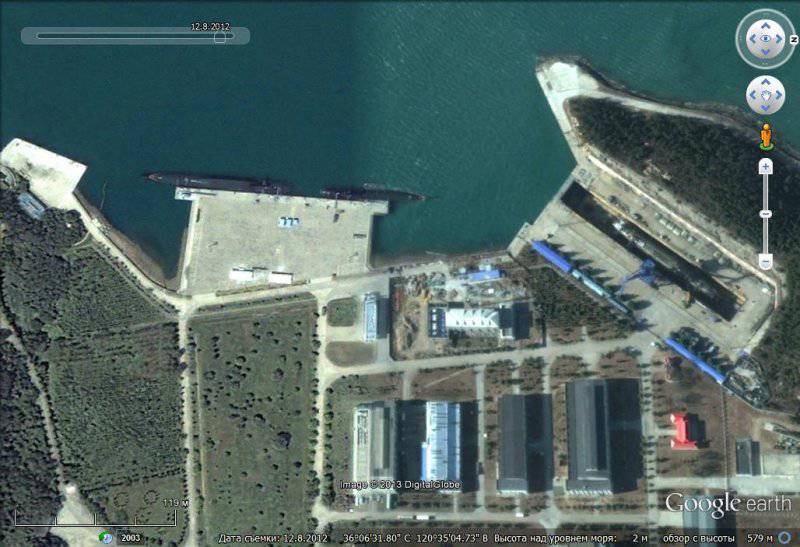
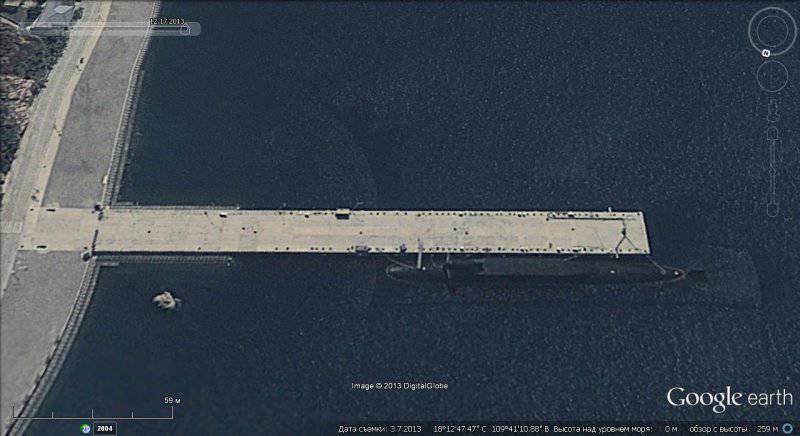
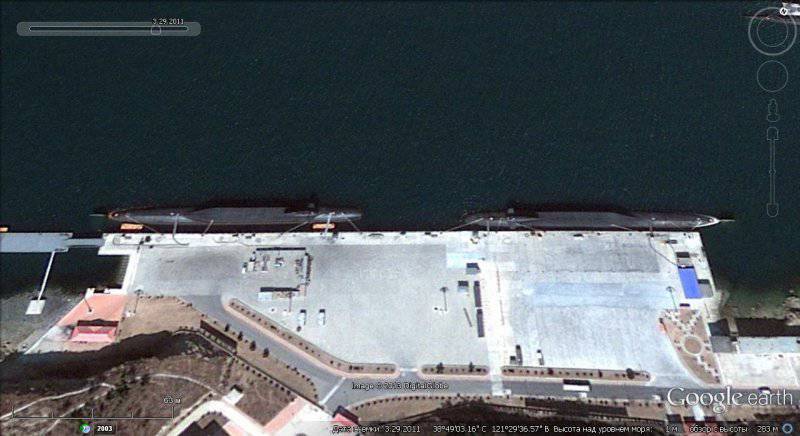
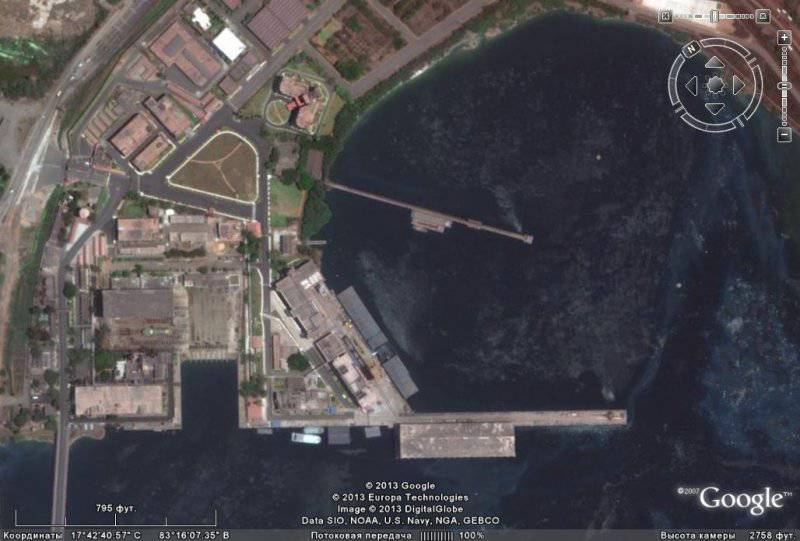
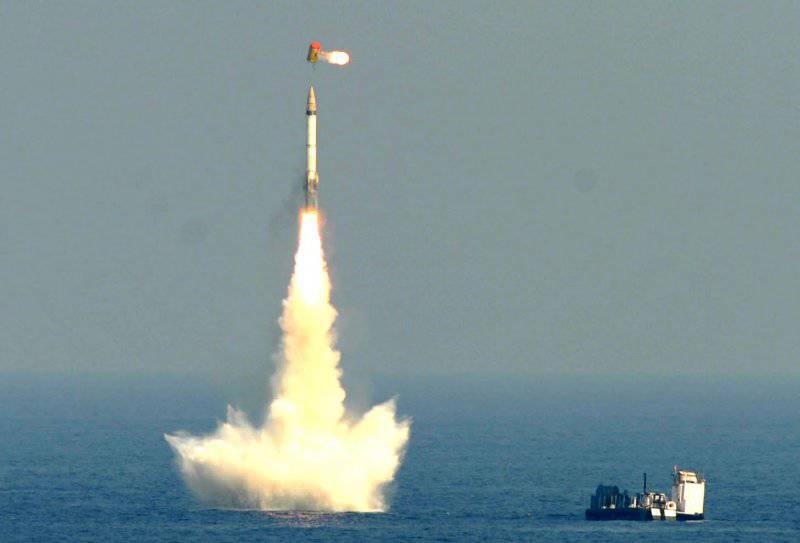
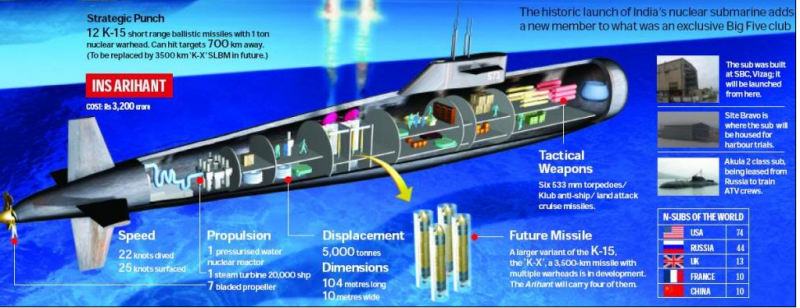
Information